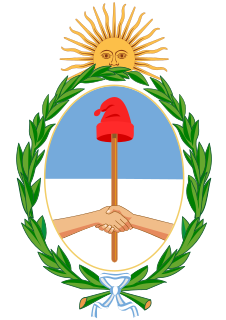 W
WThe government of Argentina, within the framework of a federal system, is a presidential representative democratic republic. The President of Argentina is both head of state and head of government. Executive power is exercised by the President. Legislative power is vested in the National Congress. The Judiciary is independent from the Executive and from the Legislature.
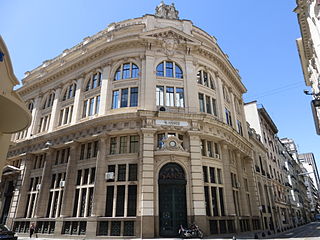 W
WThe National Social Security Administration is a decentralized Argentine Government social insurance agency managed under the aegis of the Ministry of Health and Social Development. The agency is the principal administrator of social security and other social benefits in Argentina, including family and childhood subsidies, and unemployment insurance.
 W
WArgentine passports are issued to citizens of Argentina by the National Registry for People (ReNaPer). They were issued exclusively by the Argentine Federal Police up to 2011. Their primary use is to facilitate international travel.
 W
WThe Boletín Oficial de la República Argentina is the government gazette of the Argentine Republic, on which the Argentine State publishes its legal norms such as laws, decrees and regulations, as well as other public acts from the executive and the judiciary.
 W
WThe Chamber of Deputies of the Province of Buenos Aires is one of the two houses that form the Legislature of the Province of Buenos Aires. It has 92 seats, which must conform the results of each census conducted every 10 years, without being able to reduce the number of seats per district.
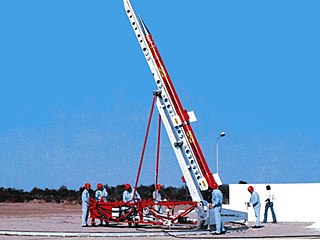 W
WCELPA (Centro de Experimentación y Lanzamiento de Proyectiles Autopropulsados) was a rocket launch site in Argentina, near El Chamical, in the La Rioja Province. The launch site was in service between 1963 and 1973 and was mainly used for launching rockets of the types Centaure, Judi Dart, Orión, Rigel and Boosted Dart. A second CELPA compound was built in 1964 in Mar Chiquita, north of Mar del Plata, under the name of CELPA Atlántico.
 W
WThe Chamber of Deputies is the lower house of the Argentine National Congress. It is made up of 257 national deputies who are elected in multi-member constituencies corresponding with the territories of the 23 provinces of Argentina by party list proportional representation. Elections to the Chamber are held every two years, so that half of its members are up in each election, making it a rare example of staggered elections used in a lower house.
 W
WThe Chief of the Cabinet of Ministers of the Argentine Nation, more commonly known simply as the Cabinet Chief is a ministerial office within the government of Argentina tasked with overseeing the government's general administration and acting as a link between the national executive and the Argentine National Congress. The position was created by the 1994 amendment to the Argentine Constitution.
 W
WThe Congress of the Argentine Nation is the legislative branch of the government of Argentina. Its composition is bicameral, constituted by a 72-seat Senate and a 257-seat Chamber of Deputies. The Senate, whose members are elected to six-year terms, consists of three representatives from each province and the federal capital. The Chamber of Deputies, whose members are elected to four-year terms, is apportioned according to population.
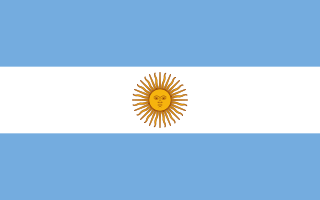 W
WCorruption in Argentina remains a serious problem. Argentina has long suffered from widespread and endemic corruption. Corruption remains a serious problem in the public and private sector even though the legal and institutional framework combating corruption is strong in Argentina.
 W
WDocumento Nacional de Identidad or DNI is the main identity document for Argentine citizens, as well as temporary or permanent resident aliens. It is issued at a person's birth, and must be updated at 8 and 14 years of age, and thereafter every 15 years. It takes the form of a card, and is required for voting, payments, military service inscriptions and formalities. They are produced by the Argentine National Registry of People.
 W
WFederal intervention is a power attributed to the federal government of Argentina, by which it takes control of a province in certain extreme cases. Intervention is declared by the President with the assent of the National Congress. Article 6 of the Argentine Constitution states: The federal government intervenes in the territory of the provinces to guarantee the republican form of government or to repel foreign invasions, and upon request of its authorities created to sustain or re-establish them, if they have been deposed by sedition or by the invasion of another province.
 W
WThis article deals with the diplomatic affairs, foreign policy and international relations of Argentina. At the political level, these matters are handled by the Ministry of Foreign Relations, also known as the Cancillería, which answers to the President. The Minister of Foreign Relations, since December 2019, is Chancellor Felipe Sola.
 W
WThe history of human rights in Argentina is affected by the Dirty War and its aftermath. The Dirty War, a civic-military dictatorship comprising state-sponsored violence against Argentine citizenry from roughly 1976 to 1983, carried out primarily by Jorge Rafael Videla's military government. However, the human rights situation in Argentina has improved since.
 W
WThe Legislature of the Province of Buenos Aires is the local legislature of the Argentinian province of Buenos Aires. It is a bicameral body, comprising the Chamber of Deputies of Buenos Aires, and the Senate of Buenos Aires. It is one of eight bicameral legislatures in the country.
 W
WThe Legislature of Catamarca is the local legislature of the Argentinian province of Catamarca. It is a bicameral body, comprising the Chamber of Deputies of Catamarca, and the Senate of Catamarca. It is one of eight bicameral legislatures in the country.
 W
WThe Legislature of Corrientes is the local legislature of the Argentinian province of Corrientes. It is a bicameral body, comprising the Chamber of Deputies of Corrientes, and the Senate of Corrientes. It is one of eight bicameral legislatures in the country.
 W
WThe Legislature of Entre Ríos is the local legislature of the Argentinian province of Entre Ríos. It is a bicameral body, comprising the Chamber of Deputies of Entre Ríos, and the Senate of Entre Ríos. It is one of eight bicameral legislatures in the country.
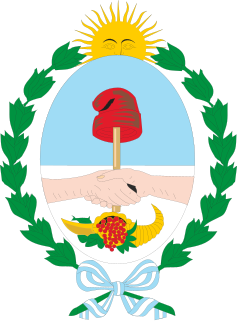 W
WThe Legislature of Mendoza is the local legislature of the Argentinian province of Mendoza. It is a bicameral body, comprising the Chamber of Deputies of Mendoza, and the Senate of Mendoza. It is one of eight bicameral legislatures in the country.
 W
WThe Legislature of Salta is the local legislature of the Argentinian province of Salta. It is a bicameral body, comprising the Chamber of Deputies of Salta, and the Senate of Salta. It is one of eight bicameral legislatures in the country.
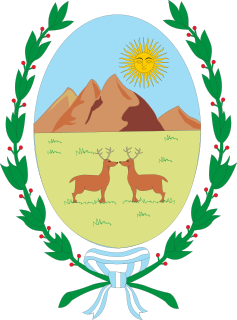 W
WThe Legislature of San Luis is the local legislature of the Argentinian province of San Luis. It is a bicameral body, comprising the 43 members of the Chamber of Deputies of San Luis, and the Senate of San Luis with 9 members. It is one of eight bicameral legislatures in the country.
 W
WThe Legislature of Santa Fe is the local legislature of the Argentinian province of Santa Fe. It is a bicameral body, comprising the Chamber of Deputies of Santa Fe, and the Senate of Santa Fe. It is one of eight bicameral legislatures in the country.
 W
WThe Ministries of the Argentine Republic, which form the cabinet, currently consist of sixteen ministries under a ministerial chief of staff. The ministers are appointed by and serve at the pleasure of the president. The current organization derives from the constitutional revision of 1994, and is governed by "The Law on Ministries".
 W
WThe National Civil Aviation Administration, otherwise known by its local initialism ANAC, is the civil aviation authority of Argentina. It was created by a presidential decree on 15 March 2007 to succeed the Argentine Air Force in its functions, overseeing all aspects of civil aviation within the Argentine territory. The body is divided into five Directorates, as well as several operative dependencies. It has its headquarters in Buenos Aires.
 W
WThe National Institute Against Discrimination, Xenophobia and Racism is a state agency of the Government of Argentina which is charged with receiving complaints and pursuing charges against citizens accused of acts of discrimination or hatred. Created in 1995 by Federal Law 24515, INADI is considered one of Argentina's National human rights institutions.
 W
WThe National Institute of Statistics and Censuses (INDEC) is a decentralized public body that operates within the Ministry of Economy of the Nation, which exercises the direction of all official statistical activities carried out in the Argentine Republic.
 W
WThe Opening of regular sessions of the National Congress of Argentina is a ceremony that takes place annually, on March 1. It is headed by the President of Argentina, who appears at the National Congress of Argentina. The president delivers a speech, detailing the state of the country and announcing bills that the executive power may send to the Congress. Those speeches are delivered in Cadena nacional. The most recent one took place on March 1, 2020, when Alberto Fernández opened the 138º regular sessions.
 W
WPAMI is a public health insurance agency in Argentina managed by the country's Ministry of Health.
 W
WThe politics of Argentina take place in the framework of what the Constitution defines as a federal presidential representative democratic republic, where the President of Argentina is both Head of State and Head of Government. Legislative power is vested in the two chambers of the Argentine National Congress. The Judiciary is independent of the Executive and the Legislature. Elections take place regularly on a multi-party system.
 W
WThe President of Argentina, officially known as the President of the Argentine Nation, is both head of state and head of government of Argentina. Under the national Constitution, the President is also the chief executive of the federal government and Commander-in-Chief of the Armed Forces.
 W
WThe Senate is the upper house of the National Congress of Argentina.
 W
WThe General Office of the Comptroller (SIGEN) is the Argentine institution that undertakes the internal control of the Argentine economy. The agency is part of the executive branch of Argentina, and was established in 1992 by Law No. 24,156. Since 2009 it has been presided over by Daniel Gustavo Reposo.
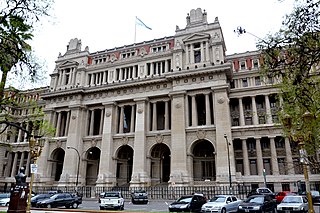 W
WThe Supreme Court of Argentina, officially known as the Supreme Court of Justice of the Argentine Nation, is the highest court of law of the Argentine Republic. It was inaugurated on 15 January 1863. However, during much of the 20th century, the Court and the Argentine judicial system in general, has lacked autonomy from the executive power. The Court has recently been reformed by the decree 222/03.
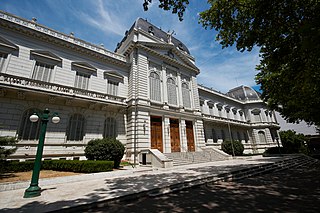 W
WThe Supreme Court of Justice of Buenos Aires is the body created in 1875 that exercises the Judicial Power in the province of Buenos Aires, one of the 24 subnational entities of Argentina.